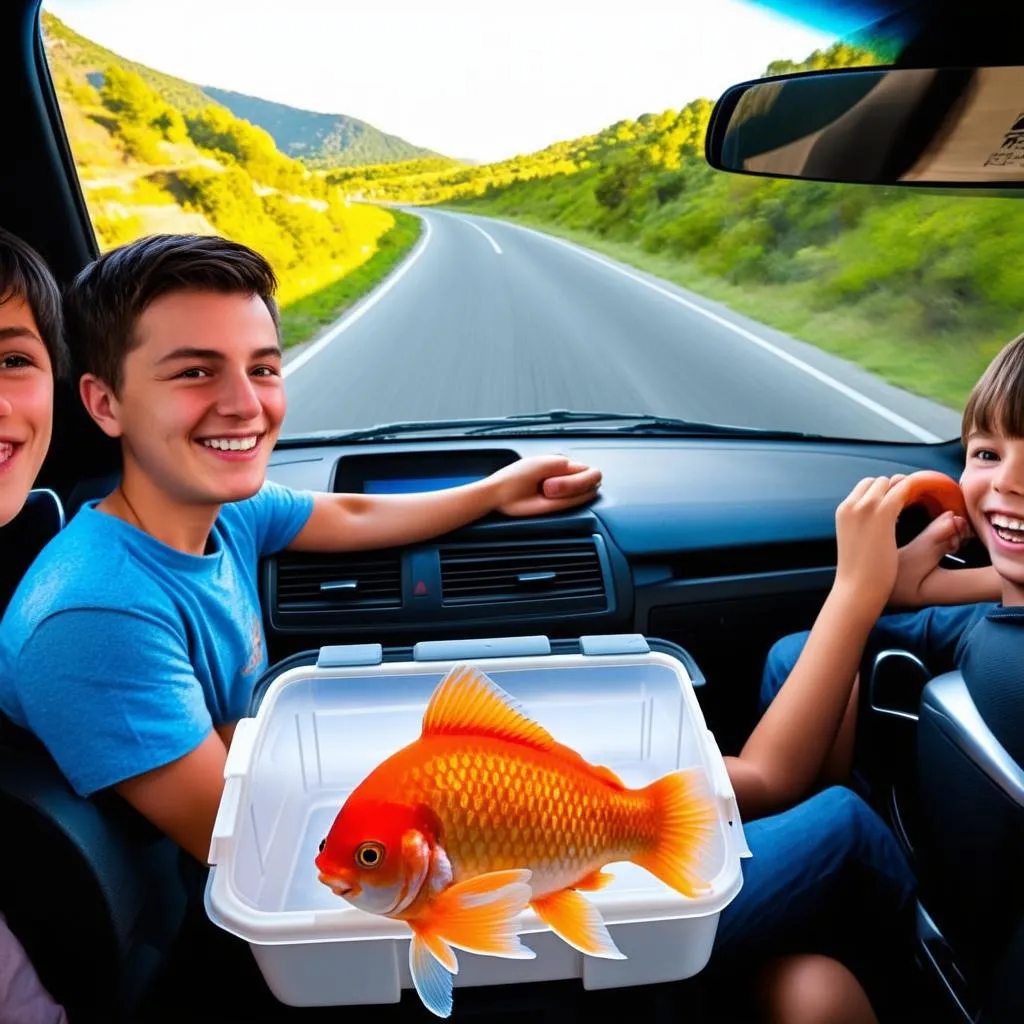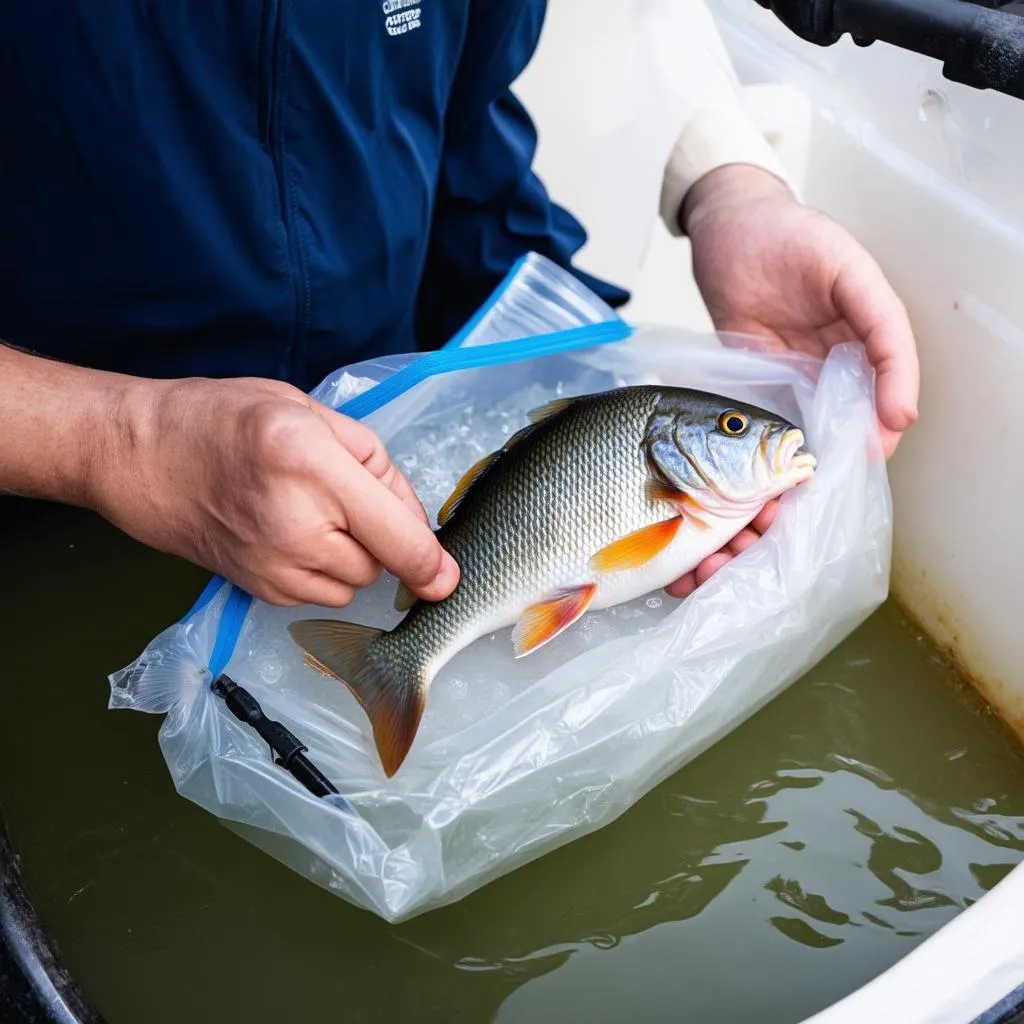Taking a vacation and can’t bear to part with your finned friend? You’re not alone! Whether you’re moving homes, visiting family, or simply want your aquatic companion on your cross-country road trip, traveling with fish is completely doable with the right preparation. This guide will equip you with everything you need to know to make your journey a splash, ensuring a smooth and safe trip for both you and your gilled pal.
Understanding the Journey: Planning is Key
Before you embark on your adventure, consider these factors that will impact your travel plans:
Fish Type and Size:
- Small, Hardy Fish: Smaller fish like Bettas or certain tetras are generally easier to transport due to their resilience and lower oxygen needs.
- Larger, More Sensitive Fish: Larger fish or those sensitive to environmental changes might require more specialized containers and careful monitoring.
- Consider their Temperament: A territorial or stressed fish might not fare well in close quarters.
Travel Distance and Duration:
- Short Trips (Under 6 Hours): Simple solutions like battery-operated air pumps and double-bagged containers might suffice.
- Longer Trips: Battery life and water quality become critical. Invest in a portable aerator, water conditioner, and a sturdy travel container.
Mode of Transportation:
- Car Travel: Offers the most control over environmental factors.
- Plane Travel: Check airline regulations in advance, as some have specific requirements for transporting live animals.
- Public Transportation: May be limited. Research options thoroughly beforehand.
 Traveling with Fish by Car
Traveling with Fish by Car
Gearing Up: Essential Supplies for Fish Travel
1. The Right Container:
- Size Matters: Choose a container that’s appropriately sized for your fish, allowing enough space to move comfortably but minimizing excess water sloshing.
- Material Considerations: Consider a clear container for easy monitoring. Avoid metal containers, which can leach harmful substances into the water.
- Secure Closure: Opt for a container with a secure lid to prevent spills and escape artists.
2. Water Conditioning:
- Pre-Trip Water Change: Perform a partial water change in your fish’s main tank 24-48 hours before departure to ensure optimal water quality.
- Dechlorinator/Water Conditioner: Essential for removing harmful chlorine and chloramines from tap water during the trip.
- Stress Coat Treatment: Helps reduce stress and anxiety during transportation.
3. Aeration and Temperature Control:
- Battery-Operated Air Pump: Provides essential oxygen during transport, especially crucial for longer journeys.
- Insulated Container/Cooler: Helps maintain a stable water temperature, protecting your fish from extreme fluctuations.
4. Packing for Success:
- Double-Bagging: Provides an extra layer of protection against leaks.
- Secure Placement: Place the fish container in a secure and stable location within your vehicle or travel carrier.
- Minimize Disturbances: Avoid unnecessary handling and noise to minimize stress for your aquatic friend.
 Packing Fish for Travel
Packing Fish for Travel
On the Road: Ensuring a Smooth Journey
Acclimating Your Fish:
- Gradual Temperature Adjustment: Allow the fish container to gradually acclimate to the temperature inside the car or travel carrier to avoid shocking your fish.
- Minimize Movement: Avoid unnecessary movement or jostling of the container during the journey.
Monitoring Water Quality:
- Regular Checks: Periodically check the water temperature and clarity.
- Water Changes (If Necessary): For longer trips, perform small water changes using dechlorinated water at a similar temperature.
Arriving at Your Destination:
- Acclimation is Key: Float the fish container in the destination tank for 15-20 minutes to equalize temperature before gently releasing your fish.
- Observe Carefully: Monitor your fish closely for signs of stress or illness in the days following the trip.
FAQs:
Can I feed my fish during the trip?
It’s best to avoid feeding your fish during short journeys. For longer trips, offer a small amount of food every other day, ensuring you remove any uneaten portions promptly.
Can I take my fish on a plane?
Airline regulations vary. Contact your airline well in advance to inquire about their specific requirements and restrictions for transporting live fish.
What are signs of stress in fish during travel?
Gasping at the surface, erratic swimming, lethargy, or loss of appetite can indicate stress. If you observe these signs, take steps to improve water quality and reduce environmental stressors.
Explore the World with Travelcar.edu.vn:
Planning your next big adventure? Visit TRAVELCAR.edu.vn for travel tips, destination guides, and resources to make your journeys unforgettable. Whether you’re exploring the bustling streets of Hong Kong or embarking on a scenic road trip along the California coast, we’ve got you covered!
Remember, traveling with fish requires careful planning and attention to detail. By following these guidelines and prioritizing your finned companion’s well-being, you can ensure a safe and enjoyable journey for both of you.
